
Lemon Basil in Vietnam: Everything You Need to Know
Lemon basil is a well-loved herb in Vietnam, known for its light citrus scent and culinary uses. In this guide, you’ll discover its unique characteristics—from the refreshing scent and flavor to detailed features like leaf shape, size, and seed development. We’ll also walk you through how it’s grown and harvested, along with its role in Vietnamese cooking.
What is lemon basil?
Growing and harvesting
Culinary uses
FAQs
What is lemon basil?
Overview
 Vietnamese name: e, e trang, or hung que trang
Vietnamese name: e, e trang, or hung que trang Shape and appearance: This herb grows up to 50–100 cm tall, featuring green stems and leaves with delicate white flowers.
Shape and appearance: This herb grows up to 50–100 cm tall, featuring green stems and leaves with delicate white flowers. Flavor profile: It has a pleasant, sweet aroma with a mild, tangy flavor.
Flavor profile: It has a pleasant, sweet aroma with a mild, tangy flavor. How to enjoy it: In Vietnam, lemon basil leaves are often eaten fresh as part of a herb platter, lemon basil seed drink, and chicken hotpot with lemon basil leaves.
How to enjoy it: In Vietnam, lemon basil leaves are often eaten fresh as part of a herb platter, lemon basil seed drink, and chicken hotpot with lemon basil leaves. Harvest season: Lemon basil can be grown and harvested year-round in tropical climates like Vietnam.
Harvest season: Lemon basil can be grown and harvested year-round in tropical climates like Vietnam. 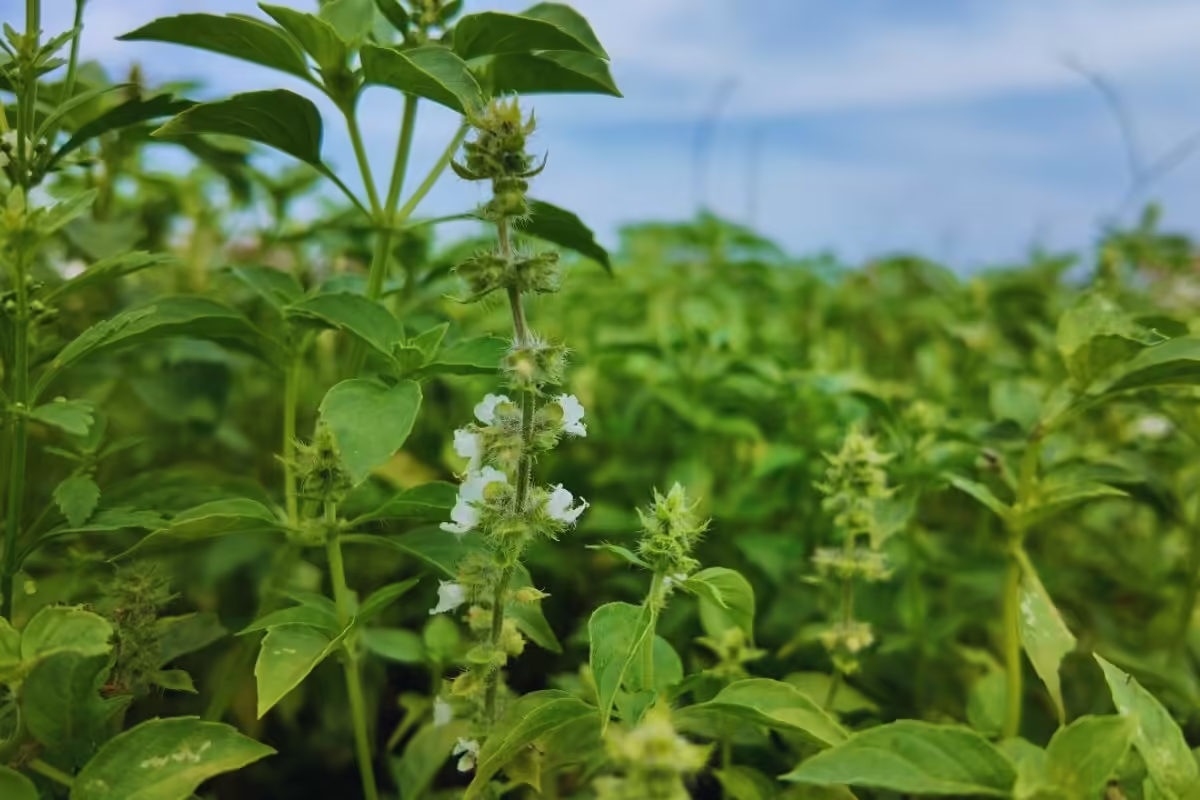
Lemon basil growing fresh and healthy in a Vietnamese garden.
Characteristics of lemon basil
Leaves
Lemon basil leaves are green and oval-shaped, growing in opposite pairs along the stem. Each leaf typically measures 4 to 6 centimeters long and about 2 to 3 centimeters wide, with lightly serrated edges.
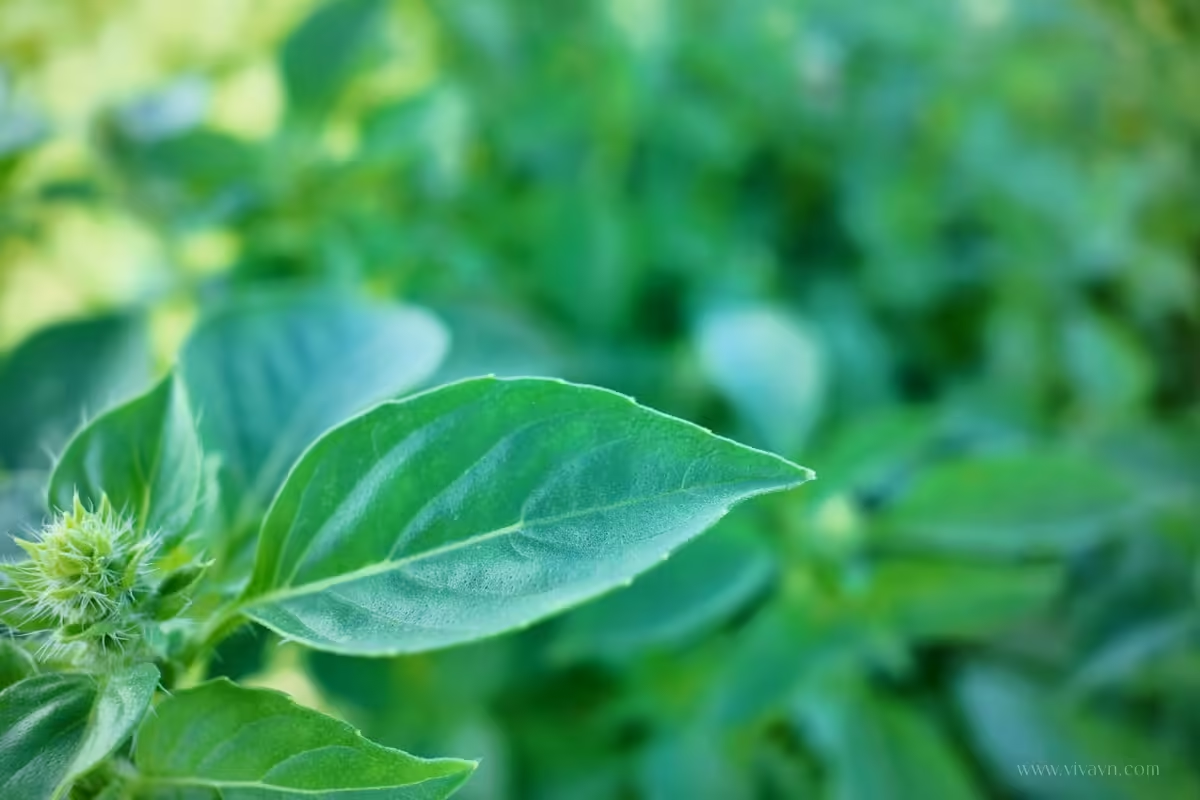
A detailed macro view of a lemon basil leaf
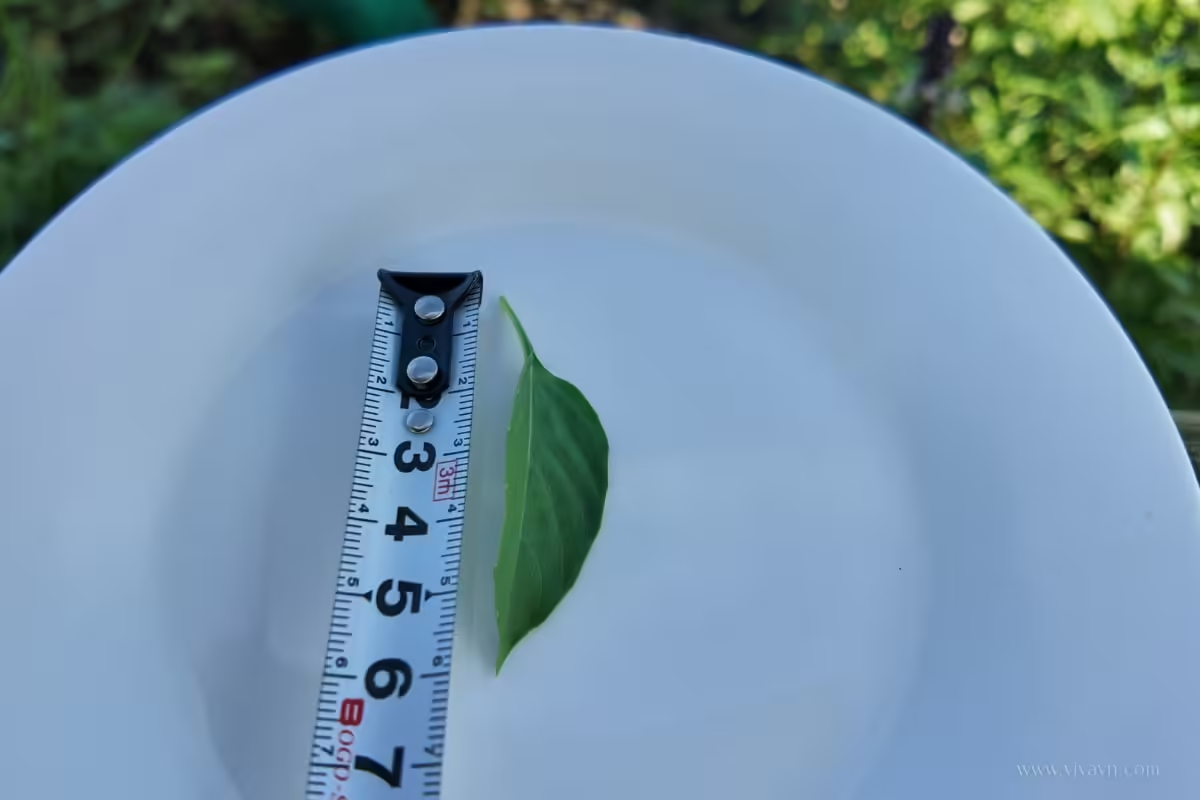
Measuring the length of a lemon basil leaf

Measuring the width of a lemon basil leaf
Stems
The stems of lemon basil are a lighter green than the leaves, covered with fine hairs, and typically grow between 50 and 100 centimeters tall.
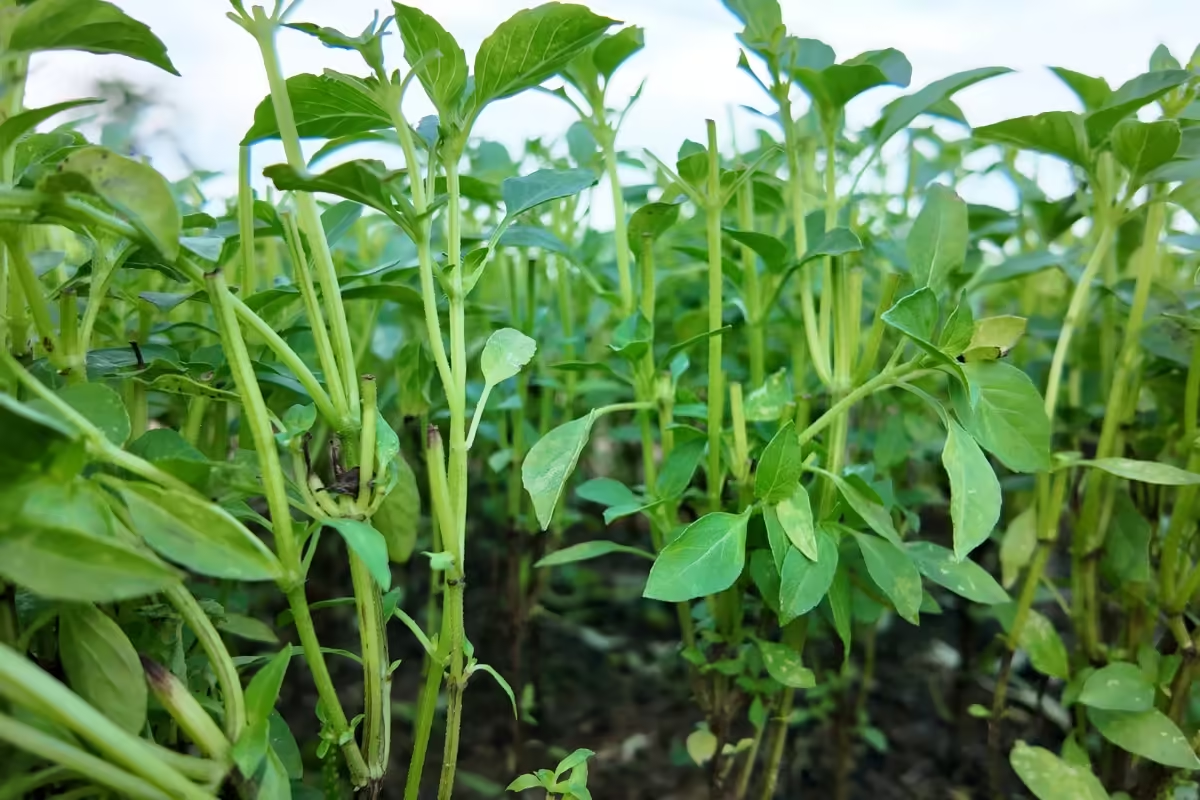
Green stems of lemon basil plants
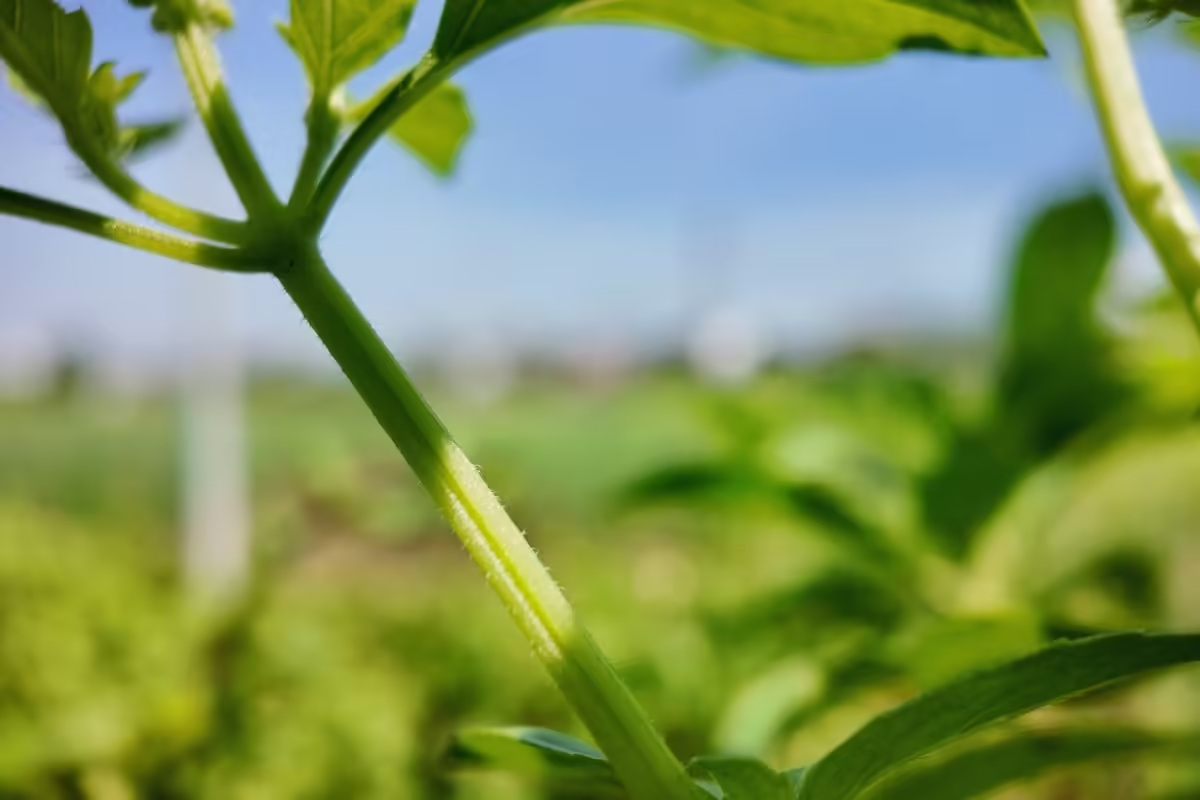
Macro view of a lemon basil stem with fine hairs and soft green color
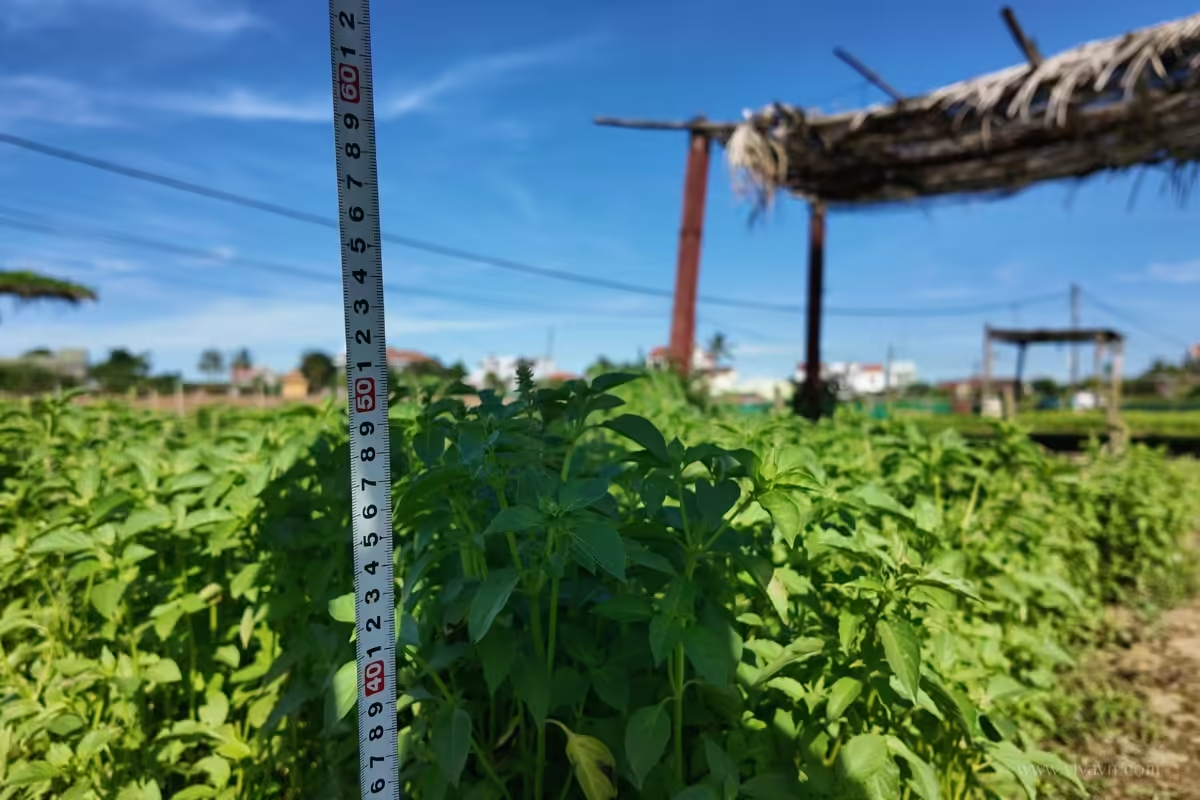
Measuring the healthy growth of lemon basil plants
Flowers
Lemon basil produces small, white flowers that bloom in clusters along the stem. After the flowers fade, they develop into tiny seed pods, marking the start of the seed formation process.
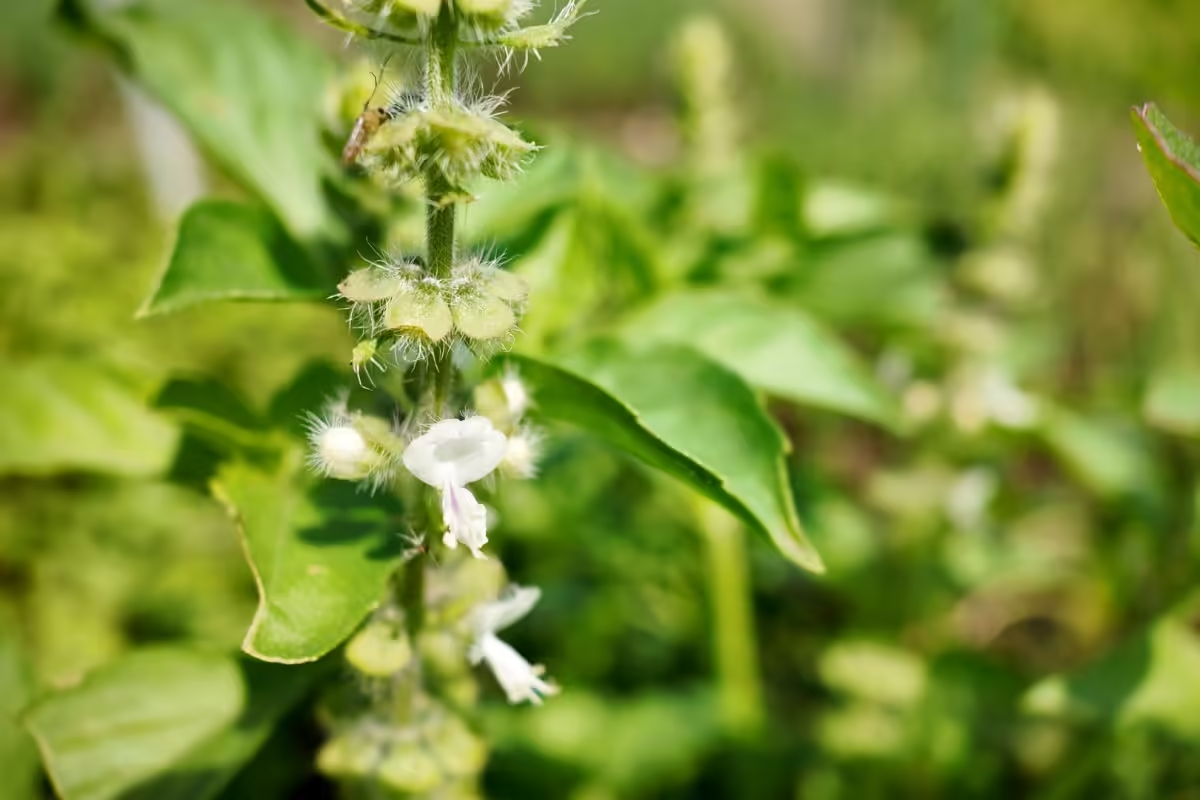
White lemon basil flowers blooming on the stem
Lemon basil seeds
After the delicate white flowers of the lemon basil plant fade, tiny seed pods begin to form along the stems. At first, the seeds inside are soft and milky in color, but as they mature, they gradually turn black—a clear sign they’re ready for harvesting. Like many Vietnamese herbs, lemon basil seeds are carefully collected and stored for the next planting season, continuing the life cycle of this fragrant herb
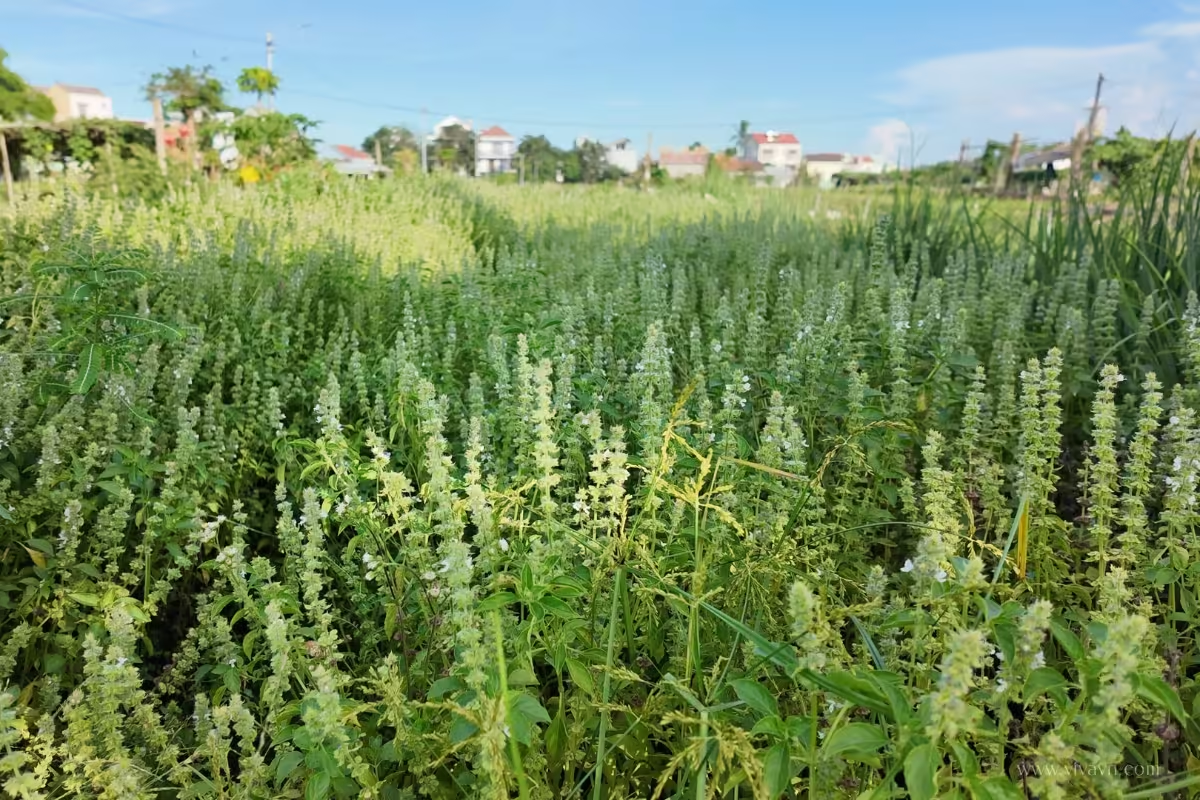
Mature lemon basil plants in Vietnam are left to produce seeds
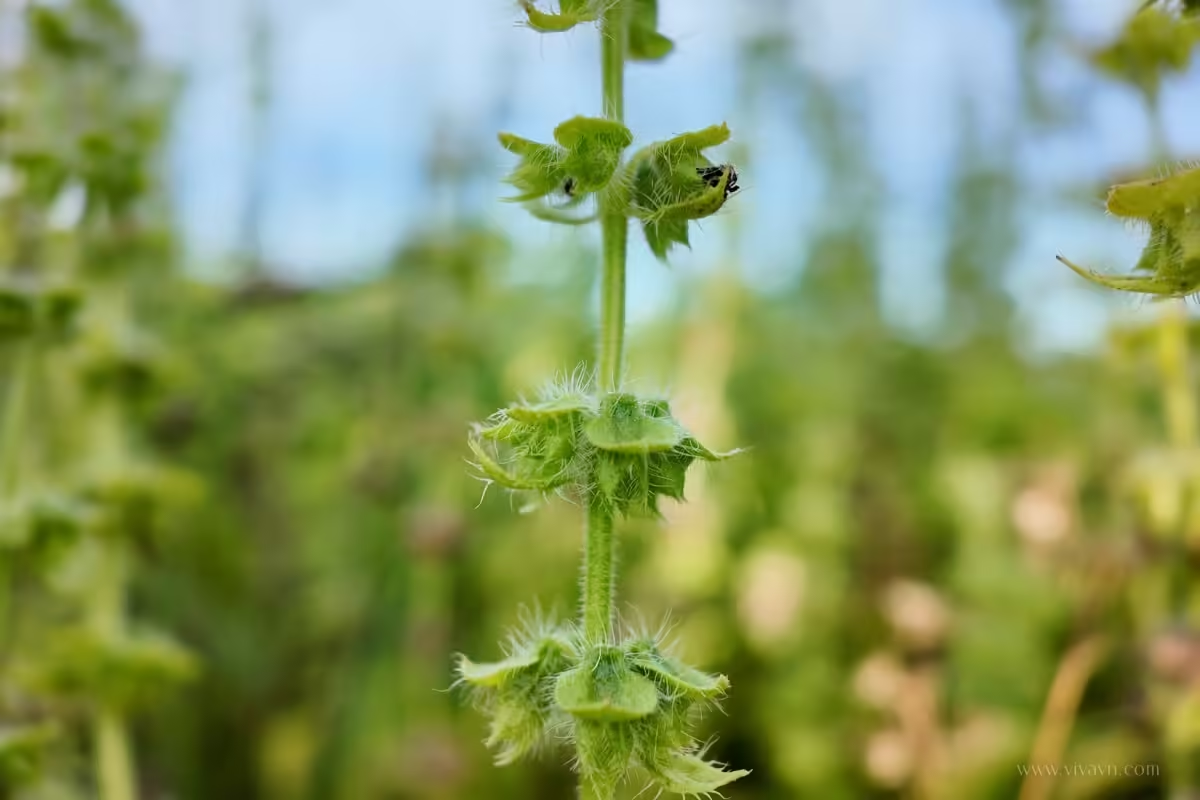
Young seed pods starting to form after flowering on a lemon basil plant
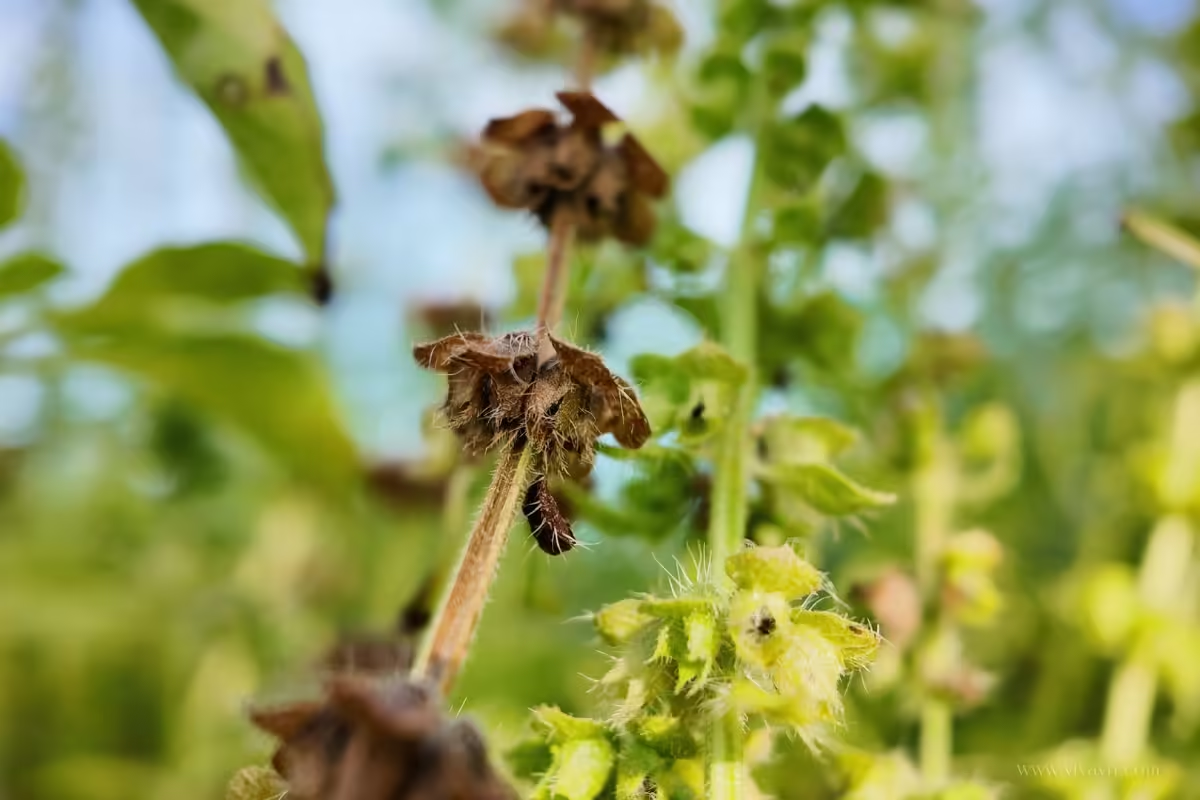
Mature seed pods on a lemon basil plant

Fresh milky-colored and mature black lemon basil seeds placed side by side for comparison.
Understanding Lemon Basil Seeds:
When soaked in water, lemon basil seeds form a soft, jelly-like layer around each seed. This gentle texture makes them a simple addition to light, refreshing drinks, often enjoyed on warm days in Vietnam.
Aroma and flavor
Lemon basil leaves and stems have a refreshing, citrusy aroma that’s soothing and slightly reminiscent of fresh lemongrass and lemons. If you pick a leaf and taste it, you’ll notice a delicate sweetness with a hint of tangy sourness, followed by a cool, minty warmth and subtle peppery notes that linger pleasantly on your tongue.
Growing and harvesting lemon basil in Vietnam
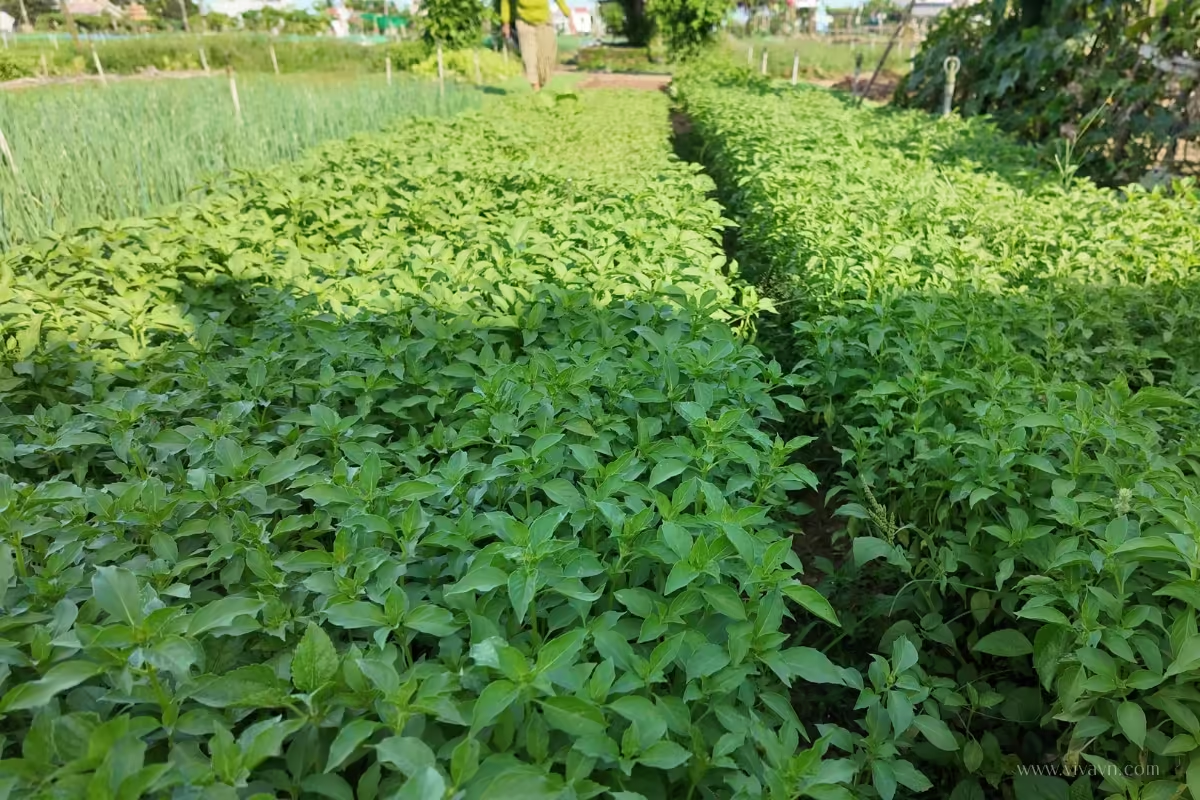
Healthy rows of lemon basil flourishing in a sunny Vietnamese garden.
Growing
Lemon basil thrives in warm, sunny climates like Vietnam, where long days of sunshine help the plants grow strong and flavorful. It grows well in full sun or partial shade, especially during the hottest part of the day. While it loves the warmth, regular watering—typically twice a day in the morning and late afternoon—is essential to keep the soil moist and the plants healthy.
For the best results, lemon basil should be planted in rich, well-draining soil that’s light and airy, allowing the roots to breathe and grow without becoming waterlogged.
Similar to Thai basil, lemon basil is often grown from seeds in Vietnam. Once the young seedlings are about 15 days old, farmers carefully transplant them to a new growing area. The plants are spaced about 10 to 15 centimeters apart to give them enough room to grow strong and healthy.
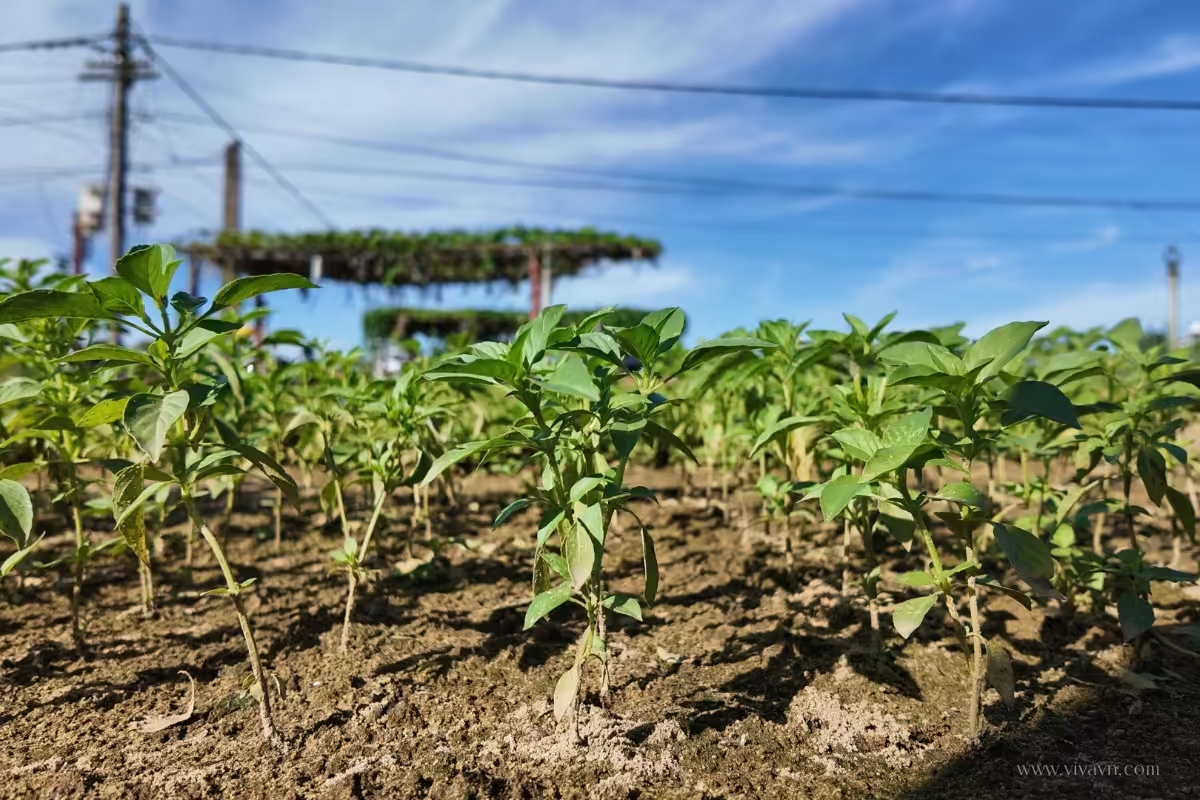
Lemon basil seedlings are spaced for healthy growth
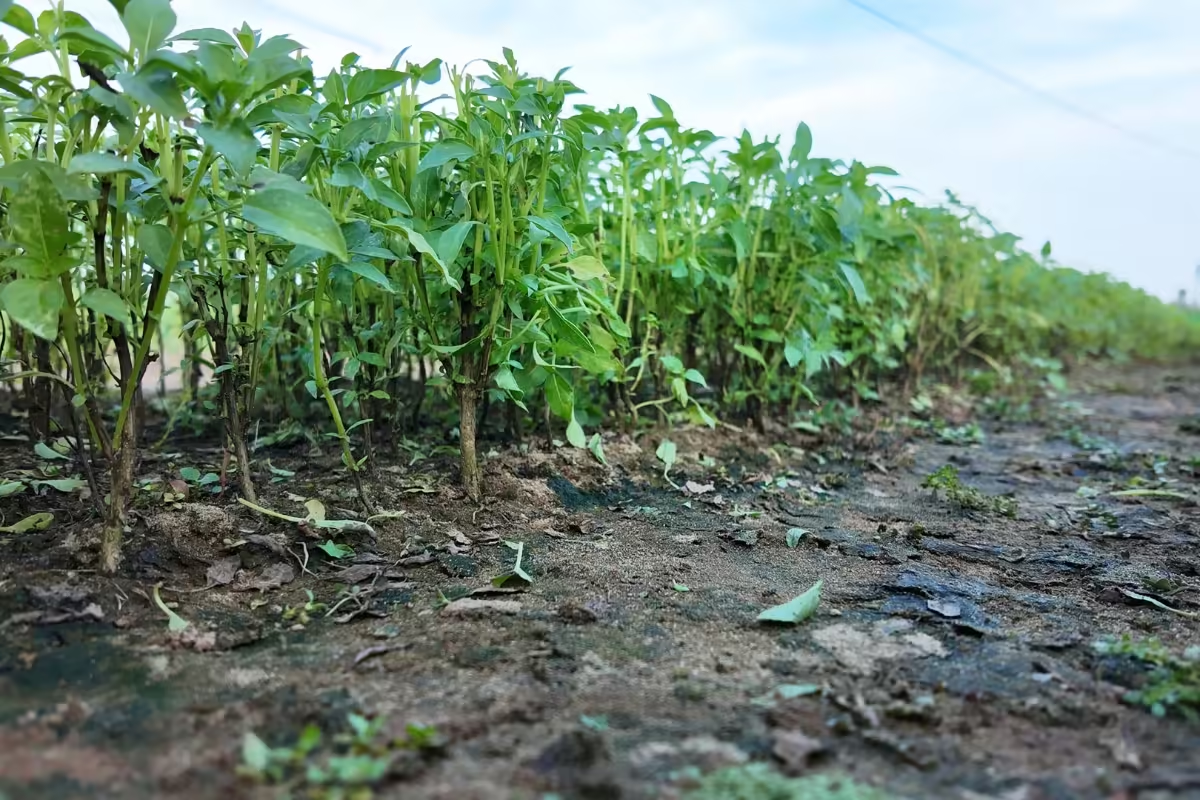
Rich, loose soil with good drainage helps lemon basil grow strong
Harvesting
In Vietnam, farmers usually begin harvesting lemon basil around 30 days after planting. Using a small knife, they carefully trim the upper portions of the plants, which encourages new shoots to grow. This method allows the plants to continue developing, providing multiple harvests over time.
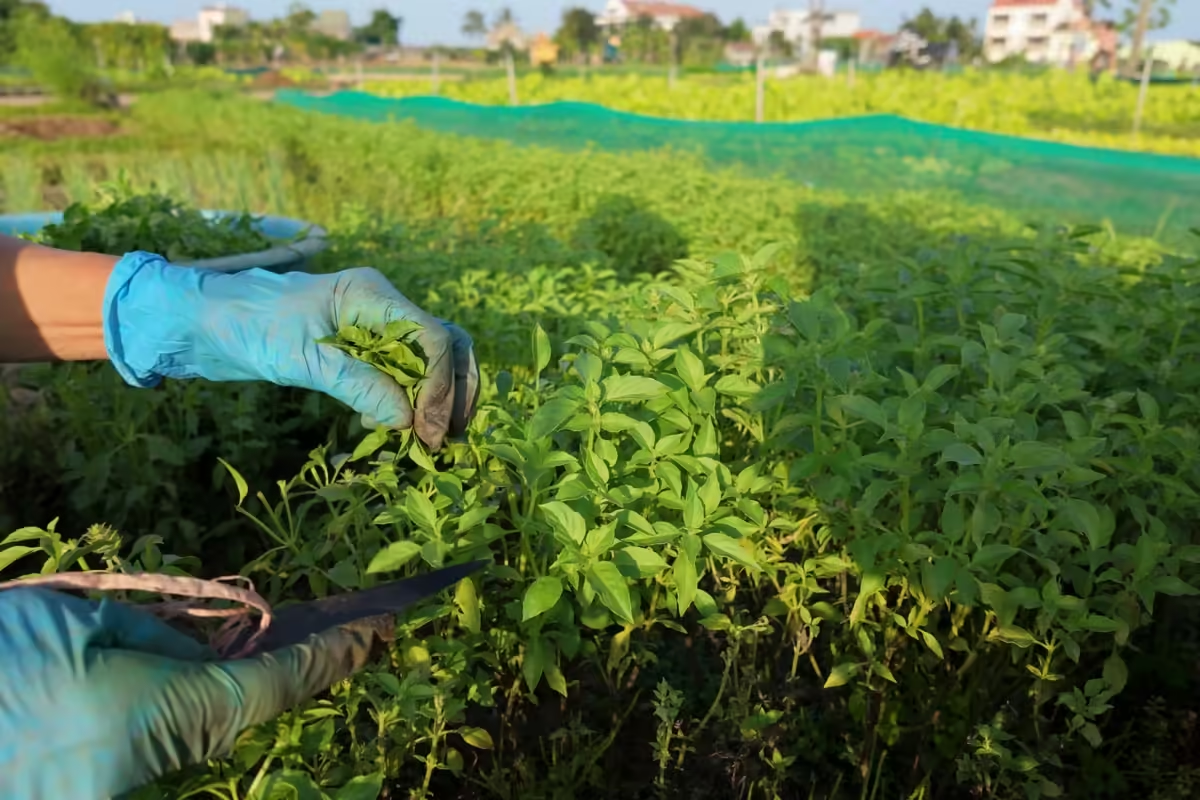
A local farmer harvests lemon basil using a small knife
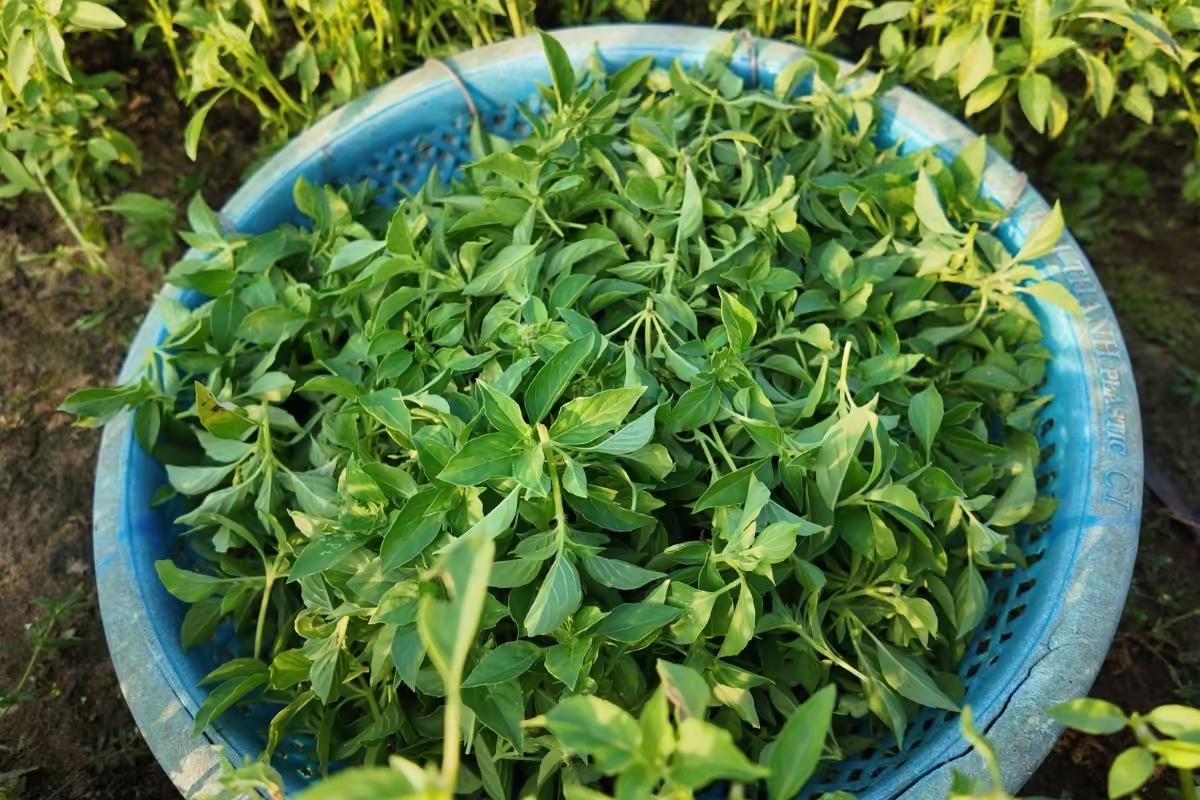
A basket filled with freshly harvested lemon basil leaves, ready to be sold at a local market in Vietnam.
Culinary uses of lemon basil in Vietnam
Lemon basil seed drink
Lemon basil seed drink is a refreshing, lightly sweetened beverage made with water, sugar, ginger, and basil seeds. It’s often served chilled and garnished with a slice of lime and fresh mint leaves. Light, aromatic, and soothing, this drink is perfect for warm days when you’re looking for something naturally uplifting.
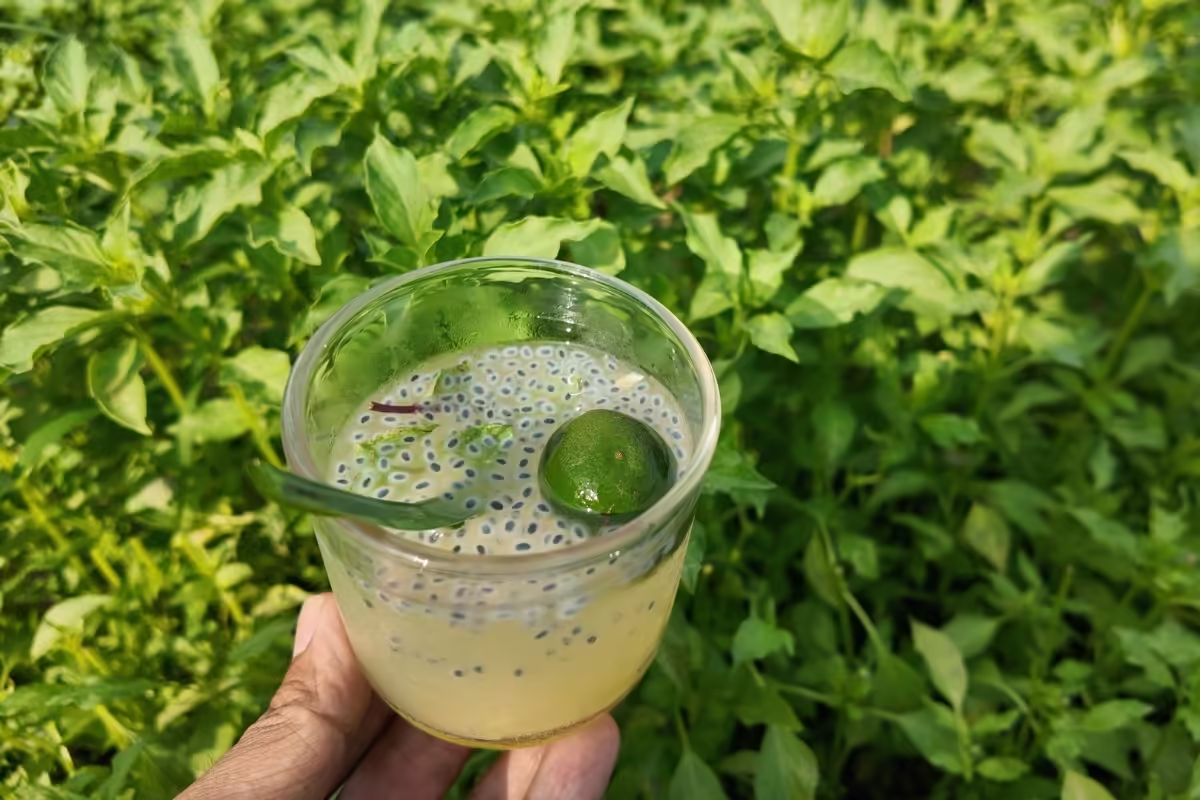
A refreshing glass of lemon basil seed drink.
Chicken hotpot with lemon basil leaves
The hotpot features tender chicken simmered with aromatic ingredients like fish sauce, garlic, and shallots, creating a rich and flavorful broth. When it’s time to eat, diners place rice noodles in their bowls, ladle in the hot broth and chicken, then add a handful of fresh lemon basil leaves. The heat from the broth gently softens the leaves, releasing their bright, citrusy aroma.
Frequently asked questions about lemon basil
Is lemon basil the same as Thai basil?
No, they’re different herbs. While both belong to the basil family, lemon basil has a refreshing citrus aroma with subtle tangy notes, while Thai basil has a stronger, spicy-sweet flavor with hints of licorice. They’re used in different Vietnamese dishes based on the flavor profile needed.
How long does it take for lemon basil to grow before harvesting?
In Vietnam’s tropical climate, lemon basil can be harvested about 30 days after planting. Farmers often trim the upper leaves, allowing the plants to regrow and provide multiple harvests.
Can I grow lemon basil at home?
Absolutely! Lemon basil grows well in warm, sunny spots with well-draining soil. Just be sure to water regularly. You’ll enjoy the refreshing scent right from your own garden!
Share on FacebookShare on X (Twitter)Share on PinterestShare on WhatsappShare on LinkedinShare on TelegramShare on Email
- https://www.youtube.com/@VivaVNOfficial
- https://www.facebook.com/vivavnofficial2024
- https://www.pinterest.com/vivavnofficial/
© 2025 VivaVN. All rights reserved.


Leave a Reply